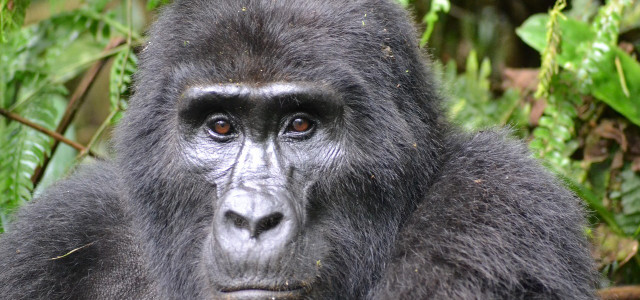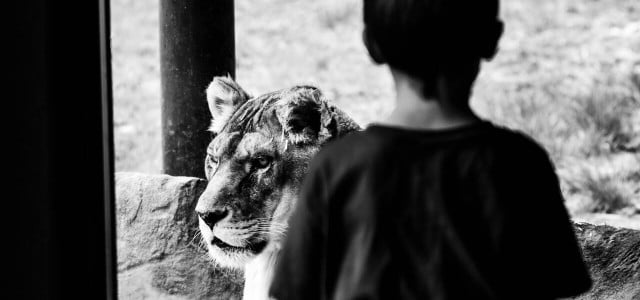Gorillas are endangered and in need of help — conservation efforts have been somewhat successful, but there is still a long way to go. Learn more here.
We share over ninety-eight percent of our genetic code with gorillas, meaning these apes are our closest cousins after chimpanzees and bonobos. They can even communicate some of the same emotions like joy and sadness. Gorillas live can be found across equatorial Africa, living in family groups ranging from five to fifty. Gorillas have dominant group leaders and they give birth to only one baby at a time. Each baby gorilla is cared for over several years, before the mother mates again, so their rate of reproduction is very low.
Gorilla Species: Are All Gorillas Endangered?
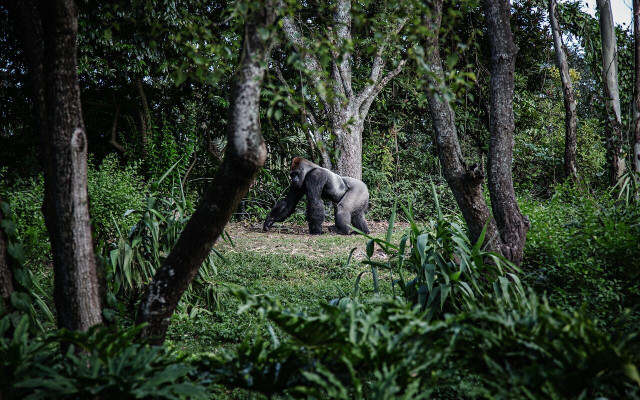
(Foto: CC0 Public Domain / Unsplash / Mike Arney)
There are two species of gorillas, the eastern and western gorillas. Each species then has two subspecies, each with one in the lowland and one in the upland. Western gorillas include the Western Lowland Gorilla and the Cross River Gorilla, whereas eastern gorillas include the Eastern Lowland Gorilla and Mountain Gorilla. Unfortunately, there are only an estimated 100,000 to 200,000 wild gorillas left. All four subspecies are listed as endangered or critically endangered species.
- Western Lowland Gorilla: the Western Lowland Gorilla resides in Cameroon, the Central African Republic, the Democratic Republic of the Congo, Gabon, the Republic of the Congo and Equatorial Guinea. They are slightly smaller than eastern gorillas, and their coats are can be brown, grey and orange. Unlike other gorillas which are entirely vegetarian, Western Lowland Gorillas eat termites and ants. Their current population is unknown, but it has declined dramatically in the last few decades.
- Cross River Gorilla: Cross River Gorillas are very similar in appearance to the Western Lowland Gorilla. They live in the Cameroon and Nigeria, in relatively close contact with humans who have encroached on their territory. Scientists estimate less than three hundred Cross River Gorillas remain in the wild.
- Eastern Lowland Gorilla: the largest of the four gorillas, Eastern Lowland Gorillas are characterized by their stocky bodies and large hands. They live in tropical rainforests in the DRC. While their population is unknown, experts estimate a fifty percent decline since the 1990s.
- Mountain Gorilla: split across two different mountain ranges, Mountain Gorillas live in forested areas in the Virunga Mountains of the DRC, Rwanda and Uganda as well as in the Bwindi Impenetrable National Park of Uganda. Mountain Gorillas are the smallest of all gorillas and they have thick fur for cold weather survival. It’s estimated about one thousand Mountain Gorillas live in the wild. Their population has dramatically decreased in the last several decades due to largely to poaching, and humans moving in on their lands. Fortunately, in 2018 Mountain Gorillas were down-listed from “critically endangered” to “endangered,” as protected areas have helped revive their populations a bit.
Why Are Gorillas Endangered?
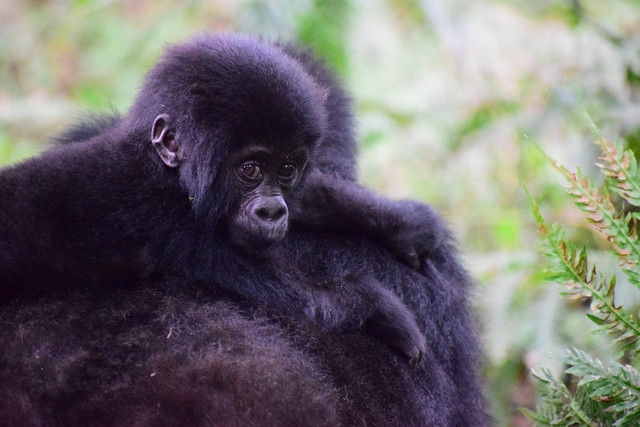


(Foto: CC0 / Pixabay / markjordahl)
Unfortunately, human activity is the main reason that gorillas are endangered. That includes things like:
- Poaching: the biggest threat to gorillas is illegal trade. Unfortunately, gorilla meat is seen as a prestigious food amongst the wealthy, so poaching is rife to meet the demand. Known as gentle giants, gorillas are fairly easy to kill. Because their numbers are so low already, even low rates of poaching can have detrimental effects on their population.
- Hunting: legal hunting also commonly results in hurting and killing gorillas as they sometimes get caught in traps set for hogs and other animals.
- Habitat loss: there are several ways in which habitat loss threatens gorilla populations. Gorillas need lots of land to roam, and they’ve already lost the vast majority of their historical lands. Human development can separate gorilla groups and push gorillas into unknown territories where they are not fit to survive. Deforestation by the logging industry also makes gorillas more vulnerable to poaching, as previously inaccessible forests become frequently traveled areas.
- Disease: Experts estimate that about a third of the gorilla population was wiped out by the Ebola virus. Gorillas are prone to many of the same diseases as humans, because their DNA is so similar. As humans encroach further into gorilla territory, this becomes more concerning.
- War: one of the reasons wildlife protection organizations have had a hard time aiding gorillas and setting up protections, is due to civil unrest and wars in the countries where gorillas live. Some of the gorilla subspecies population numbers remain unknown because scientists cannot safely enter the area.
- Insufficient protection: while poaching and trading gorillas is illegal where these creatures reside, government has little capacity to actually enforce these laws. Weak law enforcement lets gorilla poachers, traders and consumers avoid consequences.
How to Help Gorillas
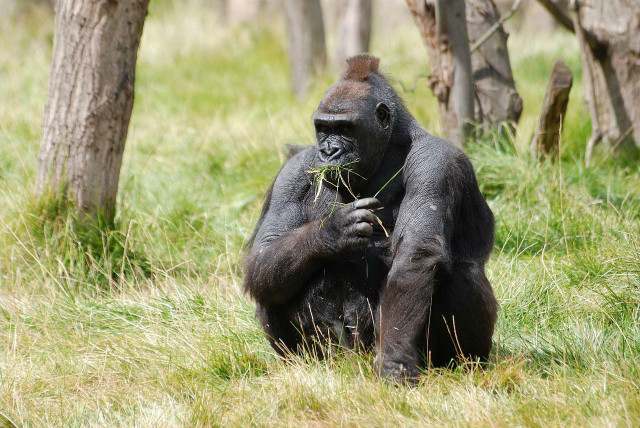


(Foto: CC0 / Pixabay / Stevebidmead)
Although gorillas are endangered, it doesn’t mean that nothing can be done to help. Here are a few ways you can help protect the gentle giants:
- Visit the gorillas: ecotourism is a big help to gorilla conservation efforts. Visiting protected areas in an ethical, permitted fashion provides the parks with needed revenue, gives jobs to local indigenous people, and provides you with a beautiful experience to remember. You can go gorilla trekking in Bwindi Impenetrable National Park or Volcanoes National Park. If you’re really interested, you can even look into volunteer work and internships.
- Be a responsible tourist: when traveling throughout the Congo Basin, be careful not to buy any products that may have been made using wild animal parts. Poachers often sell bush meat, bones, and skin to be used in items sold to tourists, so make sure not to give your money to these people.
- Donate to non-profit organizations working to help restore gorilla populations. Through the World Wildlife Fund, you can donate money or even adopt a gorilla. You can also look into conservation projects and donate directly to the parks.
- Inform others of the declining gorilla population and share what they can do to help, as well. Awareness is the first step to action, so make sure to talk about this issue with your friends, coworkers, family members and on social media.
Read more:
- Flowers for Bumblebees: How to Help Endangered Bumblebees
- Endangered Trees: 10 At-Risk Species
- Environmental Organizations: 8 NGOs and Non-Profits Worth Supporting
Do you like this post?






